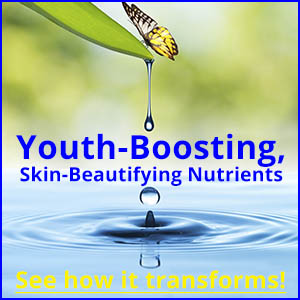1. Wild-Caught Salmon. Wild-caught salmon is rich in a rare nutrient that provides a natural defense to the sun’s burning rays. It’s called astaxanthin.
This antioxidant is produced by special microalgae named Haematococcus pluvialis. When these algae are exposed to intense sunlight, they produce bright pink astaxanthin as a survival mechanism. Salmon eat this algae and it turns their flesh bright pink. And when you consume this pigment, it keeps you safe from the kind of DNA sun damage that burns your skin.
In a groundbreaking study, researchers tested a group of people to see how long it would take them to develop a sunburn. The subjects took 4 mg a day of astaxanthin. After two weeks, they could tolerate much more time under ultraviolet light before developing sunburn damage.
Salmon is by far the richest source of astaxanthin. Just make sure it’s wild-caught. A typical 6-ounce serving of Wild Pacific sockeye salmon gives you 4 to 5 mg. I also recommend astaxanthin supplements. Take up to 10 mg per day.
2. Tomatoes. Red or orange fruits and vegetables like tomatoes have high levels of lycopene. When you eat these foods, lycopene settles into your skin’s outer layer. It acts as a natural sunblock and also repairs cells damaged by sunlight.
Lycopene prevents sun spots, dryness and wrinkles from UV radiation. In a Journal of Nutrition study, people who ate tomato paste every day for 10 weeks showed less damage when subjected to UV radiation.
3. Hibiscus Tea. Hibiscus is one of the richest sources of antioxidants in the entire plant world. And it is also a natural sunscreen. Studies show it absorbs UV rays from the sun.
I often make a big pitcher of cold hibiscus tea and sip it throughout the day. Studies show it can restore antioxidant levels within just one hour of drinking it.5
Look for any tea that lists hibiscus as the first ingredient. You might also see it called sour tea, red tea, flor de Jamaica, sorrel or roselle. Just place 4 tea bags in 8 cups of water and let it steep overnight in the refrigerator. Remove the bags in the morning and add the juice of one lemon. The brewed tea will have a tart taste. You may want to add some honey or stevia as a sweetener.
Is Your Sunblock Increasing Sun Damage?
Vitamin D is a vitally important nutrient that insures healthy function in just about every system in your body. Vitamin D’s also the most potent cancer fighter in the world. A report came out of a Nebraska university showing that vitamin D has the potential to lower the risk of all cancers in women over 50 by 77 percent.
A study by the journal Anticancer Research says very clearly that the more you make vitamin D from the sun’s rays, the lower your chances are of dying from 15 kinds of cancer. University of California researchers discovered that oxybenzone – a common sunscreen ingredient – boosts the production of dangerous free radicals in your skin after just 20 minutes of exposure to the sun!
You should also avoid using BHA – another common sunscreen ingredient – if you’re going out in the sun. And scientists say you shouldn’t use it at all on young children. BHA and its cousin BHT are used as preservatives, but the National Institutes of Health says it’s “reasonably anticipated” to cause cancer in humans.
The truth is, commercial sunscreen products can do more harm than good. They’re loaded with chemicals that could…
- Disarm your body’s natural defenses against sun damage… multiplying the harmful effects of the sun’s rays;
- Damage your DNA… increasing your chances of serious health problems;
- Affect your hormone balance and contribute to early puberty in children

